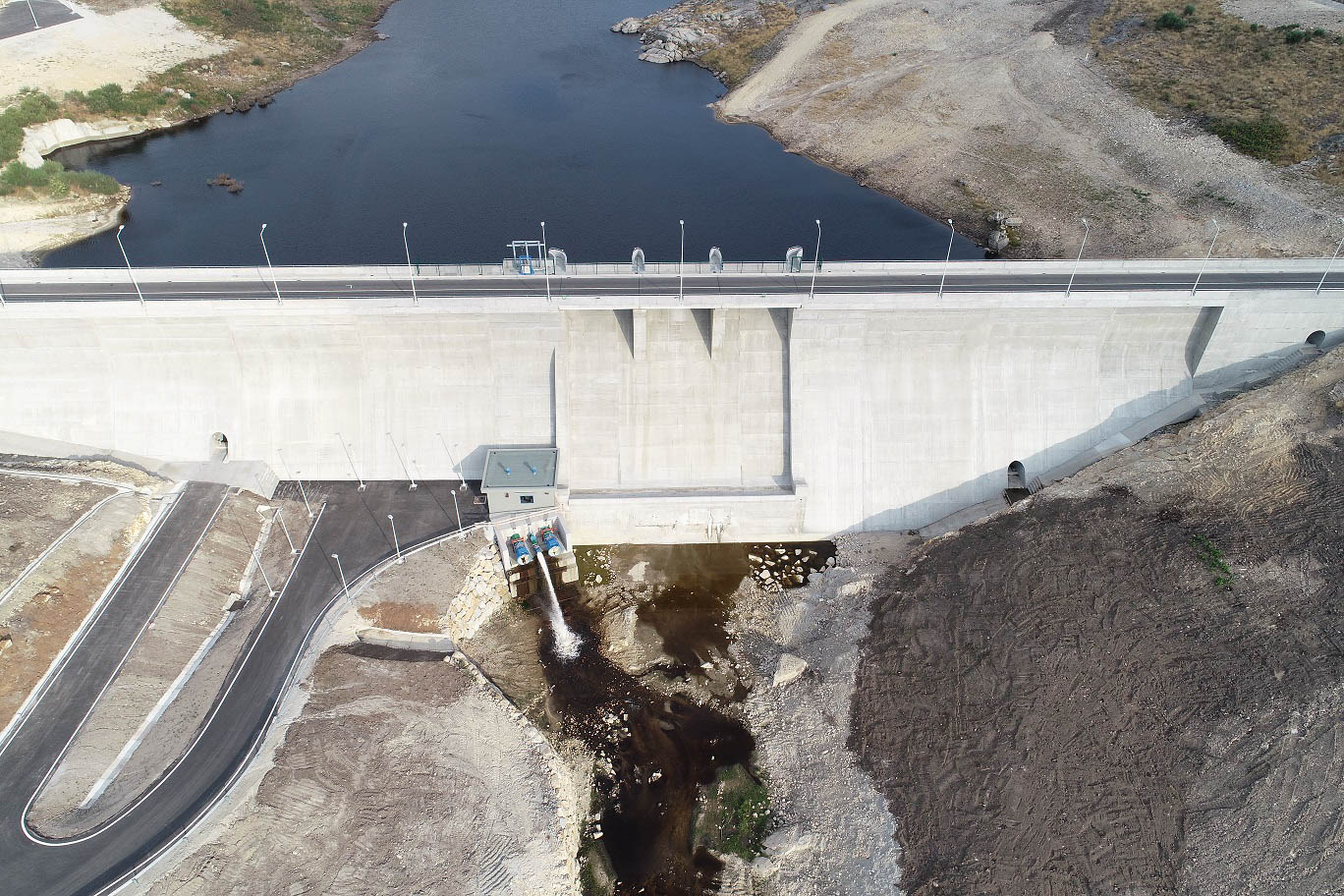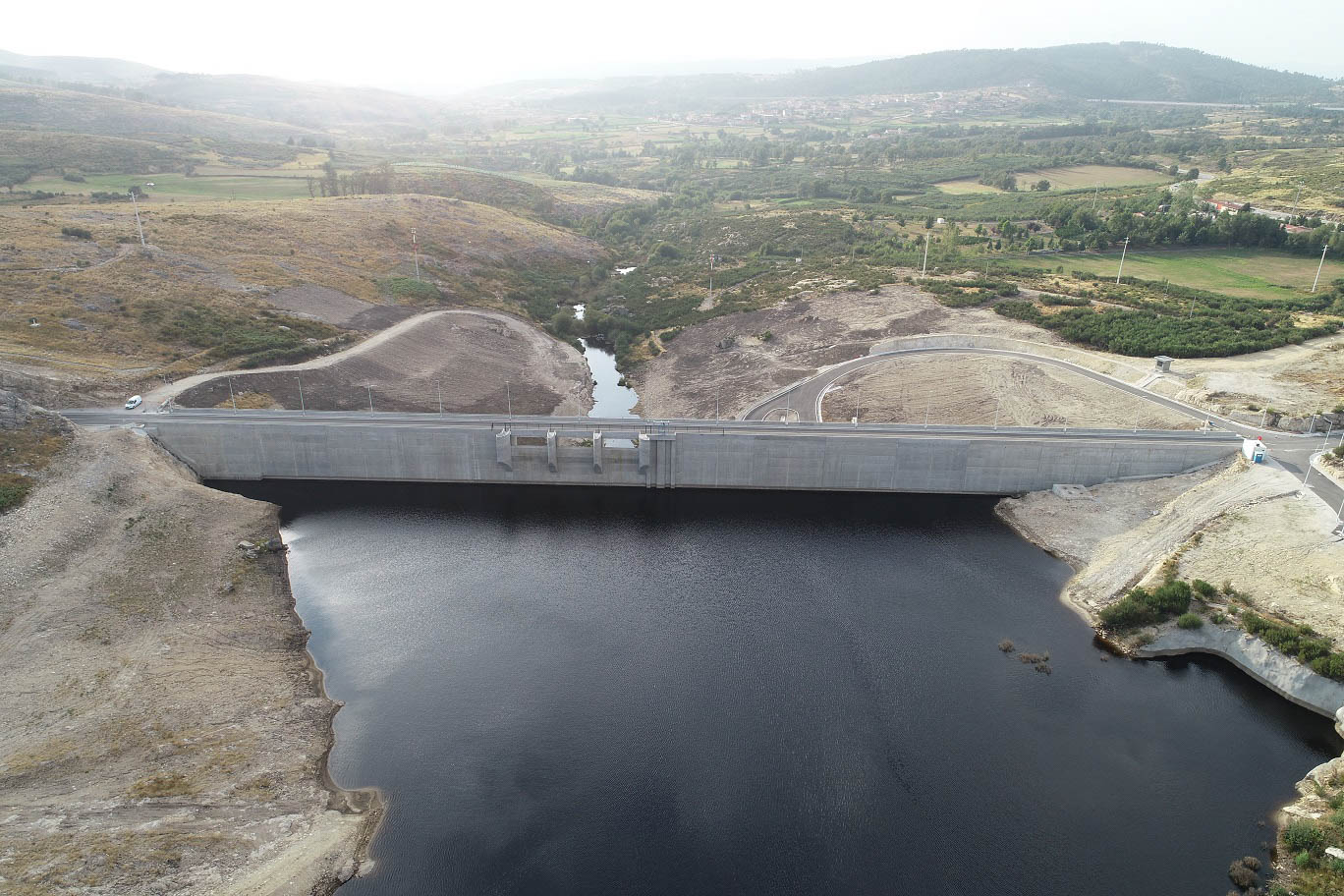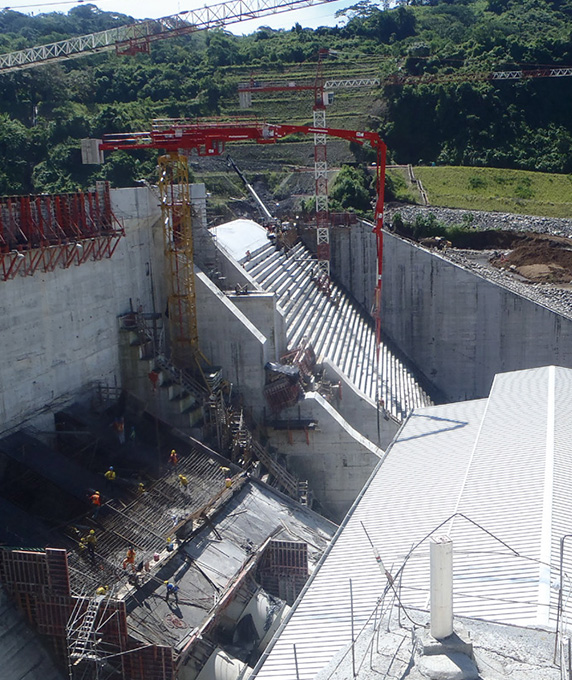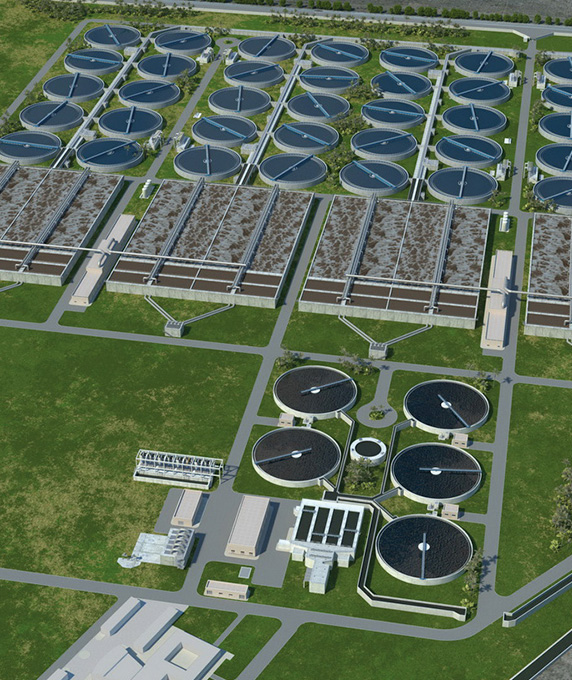
Type of work
Hydraulic works
Gouvães dam
Portugal
Construction of the Gouvães hydroelectric harvesting dam, Ribeira de Pena.
Construction of the Gouvães hydroelectric harvesting dam, Ribeira de Pena.
Description
Construction of the Gouvães dam and respective access from both banks. The dam is located on the Torno River, a tributary of the Tâmega River on its left bank, near the town of Gouvães da Serra, in the municipality of Vila Pequeno de Aguiar, district of Vila Real.
The settlement mass of the dam is formed by small granites, fractures of two micas, of medium grain and of medium to coarse grain, with a high hardness. The dam is a concrete gravity dam with a maximum height of 30 meters above the Foundation. The plan is straight, 232.7 m long at the crown, located at an elevation of 887.50 m. The cross section is triangular, the upstream slope is vertical, while downstream it has a slope of 0.75: 1 (H: V).
The passage over the spillway, located in the central part of the dam, will be carried out through a viaduct built with precast beams. For the construction of the dam, 16 blocks will be built, 15 m wide (except for the outlet blocks on the margins that are narrower), separated by smooth flat joints. The blocks will be concreted with 3 tower cranes.
The maximum height of the layers will be 2.0 m, with sub-layers 0.40-0.50 m thick. The total volume of the dam is approximately 43,000 m³.
The project included the execution of two galleries: a perimeter gallery that crosses the body of the dam 2.50 m from the bottom of the excavation and a horizontal visit gallery at elevation 874.80.
The foundation treatment will be carried out from the perimeter gallery. It included the supply and assembly of hydro-mechanical equipment and the observation system and restoration of the 1,600-meter long municipal access road to Gouvães (access C16). The Gouvães reservoir will have a capacity of 13.7 Hm³.
The Gouvães dam is part of the Tâmega electricity production complex that also includes the Alto Tâmega and Daivões HPP and the connecting elements between Daivões and Gouvães.











